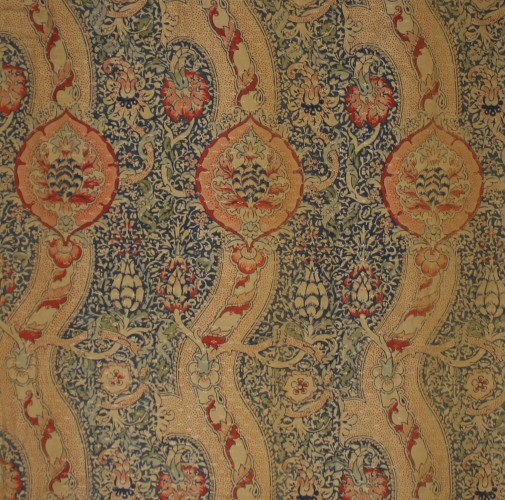This Renaissance design is one of six featured in the Studio Yearbook of 1907 and called Dusseldorf. The article mentioned that: ‘Dusseldorf is an elaborate design of early 16th century, constructed in pale wavy bands, broken by prominent rosettes’. Thomas Wardle had links with the museum and art school in Krefeld or Crefeld, north-west of Dusseldorf and centre of the silk weaving industry in Germany. He knew the Museum Director, Herr Schultz who was attached to the Royal Weaving School at Crefeld. The museum had a magnificent Royal Textile Collection. In 1893 Wardle invited Schultz to talk at the Royal Society, London on historic textile designs. Wardle was influenced by descriptions of historic trextiles which were shown in the talk but had probably seen this design in the museum. By the time this fabric was printed in around 1907, Thomas Wardle had died and his son was running the business. He clearly thought the design was commercial.
“The most striking element of this piece is its sense of movement and vibration. The colours wrapping around the vines and the wave shapes of the three vertical channels bring to mind water and an ongoing fluidity. The central lilypad shapes create a focus as well as a sense of organic life. The lack of empty space in this very detailed design gives the impression that the pattern is teaming with living organisms.” Raizel Frankl-Slater, WMG Young Producer
